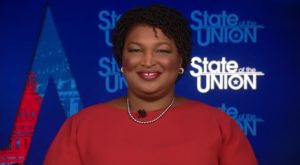On Wednesday, working my way back to Central Jersey from the annual convention of the Education Writers Association, I boarded an Amtrak in Boston to New York City’s Penn Station, hopped on N.J. Transit, and read an editorial in N.J. Spotlight by two North Jersey superintendents. Maybe it was the long days or the lull of the railroad, but my head was spinning. After all, I’d just spent three days immersed in sessions involving EWA’s theme of “The Quest for Quality and Equity” and attendant discussions of racial turmoil, poverty, and achievement gaps. Yet here were two school leaders asserting that our schools were just fine.
In fact, better than fine. Emerson Public School District Superintendent Brian P. Gatens and Ramsey Public Schools Superintendent Matthew J. Murphy declare that American schools
collectively remain the most successful public education system in history — and a consistent driver for the most fluid, powerful economy the world has ever seen. The Bergen County Association of School Administrators takes distinct pride in the quality of our county’s schools, acknowledging that their long-term success is a result of hard work by our boards of education, dedication of our teachers, strong partnerships with students’ homes, support of our communities, and personal leadership of our association’s members.
And that’s why Messrs. Gatens and Murphy regard with distaste the state’s “overemphasis” on standardized testing, which interferes with their mission to “develop the whole person via a sweeping menu of academic, vocational, and extracurricular offerings. Arts, music, advanced classes, volunteer opportunities, and clubs are just a few examples of what our schools should make available. In addition, parents should be encouraged to support those classes by attending art shows, performances, and student exhibitions. Remember — we pay attention to what we value.”
You can see why I felt like I was coming back not from Boston but from Mars.
A little context is useful for spinning brains. Emerson and Ramsey school districts are both in Bergen County, N.J. one of the state’s wealthiest and whitest areas. While N.J.’s median family income is about $70K, in Emerson it’s about $100K and in Ramsey it’s about $118K.
Emerson Public Schools’ enrollment, according to the State D.O.E., is 79.8% white and 8.7% Asian. Only 8% of its students are economically disadvantaged. Ramsey’s student body is 86.4% white and 6.4% Asian; 3.8% of students are economically-disadvantaged. Almost everyone goes to college. Almost everyone does well on standardized tests, PARCC or SAT. Maybe Emerson and Ramsey families really do feel like they have access to “the most successful public education in history.”
As long as we’re on the road, just 7 miles from Emerson is Hackensack, NJ, also in august Bergen County. But at Hackensack High School 45% of students are Hispanic , 26.1% are black, and 49.5% are economically-disadvantaged. Only 31% of high school juniors and seniors score above 1550 on the three-part SAT, a widely-accepted metric for college and career readiness. And, understand, Hackensack High is a pretty good school. According to the DOE, “its college and career readiness is about average when compared to its peers.”
And those students from Hackensack, and those from far more impoverished school districts that are all over New Jersey, were the focus of the EWA conference. They don’t get equity. They don’t get quality. And, while most people want their children exposed to arts and music and theater, most parents who can’t afford to live in Emerson or Ramsey support standardized testing and and a renewed focus on academics.
One of the sessions I went to in Boston was called “Engaging Parents of Color” and featured a poll conducted by The Leadership Conference Education Fund. Parents of color are the “new majority” and the poll, therefore, covered a number of education-related topics to drill down on growing views of American education. The results of this poll demonstrate a sharp contrast between the views of two N.J. school superintendents of rich white districts and the new majority of parents of color.
Here are two results from this poll of the new majority of American parents:
- By an 11-point margin, African Americans believe U.S. schools do not do a good job preparing Black students for the future (42 percent positive / 53 percent negative) and are nearly four times as likely to say that schools do a poor job (22 percent) than an excellent one (5 percent). A third of African-American parents and family members (33 percent) are especially critical, and believe that U.S. schools are not even “really trying to educate Black students
- Want More Academic Rigor and High Expectations for All Students • New majority parents and families overwhelmingly believe that students should be challenged more in school. Nine-out-of-ten African Americans and 84 percent of Latinos disagree that students today work hard enough and instead believe that students should be challenged more to help ensure they are successful later in life.
It’s a big world out there. School administrators and parents in old-majority districts should take a look around.


